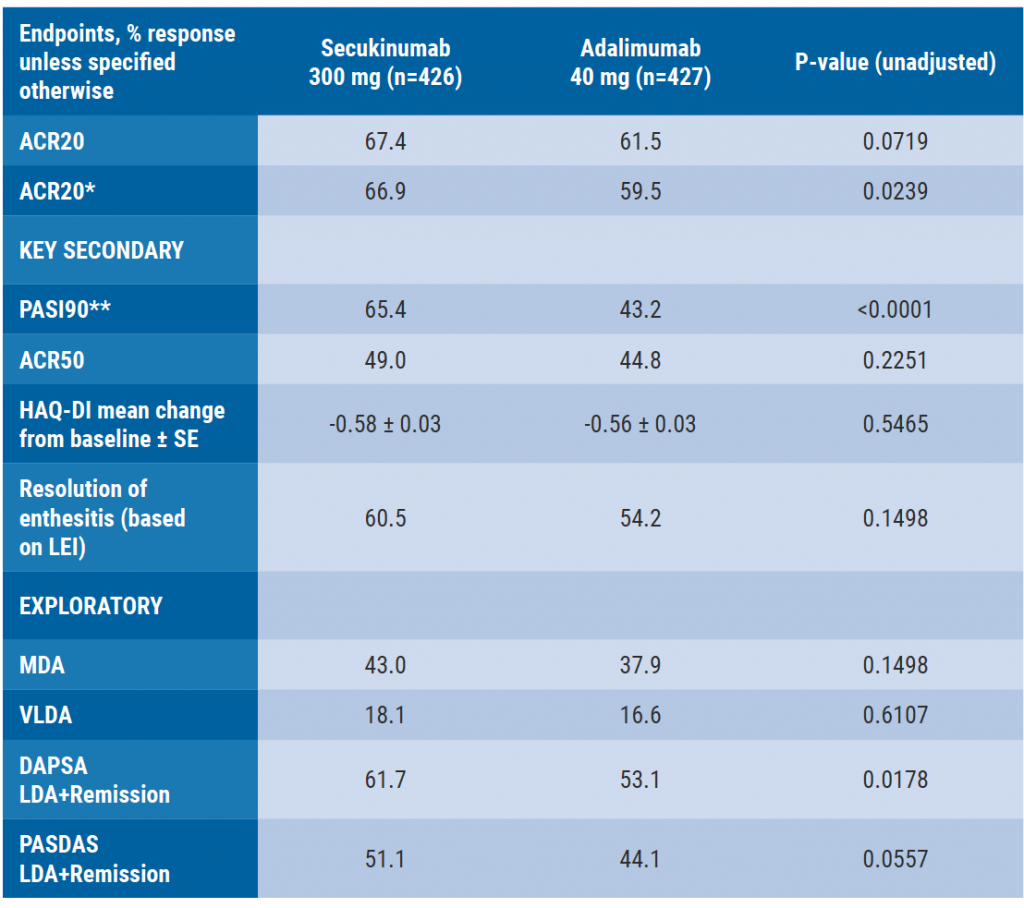“Until recently, NSAIDs and TNF inhibitors were the standard-of-care pharmacological therapies for patients with AS,” said Dr Philip Remans (Reumacentrum Genk, Belgium) [1]. At the 26th Belgian Congress on Rheumatology, Dr Remans presented the results of the observational INVISIBLE study, which collected and analysed data on disease activity in patients with AS treated in a real-world setting in Germany, Austria, or Belgium (n=746). All the included patients with AS were receiving ongoing treatment with TNF inhibitors and/or NSAIDs for at least 12 weeks prior to enrolment. Baseline characteristics revealed that patients with Bath Ankylosing Spondylitis Disease Activity Index (BASDAI) scores ≥4 were generally older and had a higher BMI.
At the time of the analysis, 99.6% of the included patients were on medical treatment for AS: 23.0% received NSAIDs, 41.8% were being treated with TNF inhibitors, 29.8% received both these agents, and 5.4% were being treated with other agents.
In total, 42.2% of the patients treated with NSAIDs and TNF inhibitors displayed a BASDAI ≥4, indicating a high disease activity. In addition, patients treated with only NSAIDs or only TNF inhibitors had a BASDAI score ≥4 in 50% and 32.5% of the cases, respectively. Dr Remans showed that BASDAI scores were correlated with the Assessment of Spondyloarthritis international Society Health Index (ASAS HI), Bath Ankylosing Spondylitis Functional Index (BASFI), and Functional Assessment of Chronic Illness Therapy-Fatigue (FACIT-F) scores, depicting a link between disease activity and functioning and quality-of-life. Furthermore, 82.1% of the patients with BASDAI <4 were satisfied with their current state according to Patient Acceptable Symptom State (PASS) scores, compared with only 38.7% of the patients with BASDAI scores ≥4.
“This real-world study showed that disease control and treatment response to NSAIDs and TNF inhibitors are suboptimal in many patients with AS,” highlighted Dr Remans.
- Dierckx S, et al. Real world evidence on disease activity in patients with ankylosing spondylitis treated with Tumour Necrosis Factor inhibitors (TNFi) and/or nonsteroidal anti-inflammatory drugs (NSAIDs) in routine care: Results from the INVISIBLE study. Abstract A12, BCR 2022, 21-23 Sep, Mons, Belgium.
Copyright ©2022 Medicom Medical Publishers
Posted on
Previous Article
« TARDIS-RA suggests choosing IL-6 inhibitors after JAK inhibitor failure Next Article
Novel biomarkers enable personalised medicine in early RA »
« TARDIS-RA suggests choosing IL-6 inhibitors after JAK inhibitor failure Next Article
Novel biomarkers enable personalised medicine in early RA »
Related Articles
September 4, 2019
Etanercept and methotrexate as first-line treatment in PsA

August 14, 2020
Secukinumab monotherapy as efficient as adalimumab
© 2024 Medicom Medical Publishers. All rights reserved. Terms and Conditions | Privacy Policy
HEAD OFFICE
Laarderhoogtweg 25
1101 EB Amsterdam
The Netherlands
T: +31 85 4012 560
E: publishers@medicom-publishers.com

